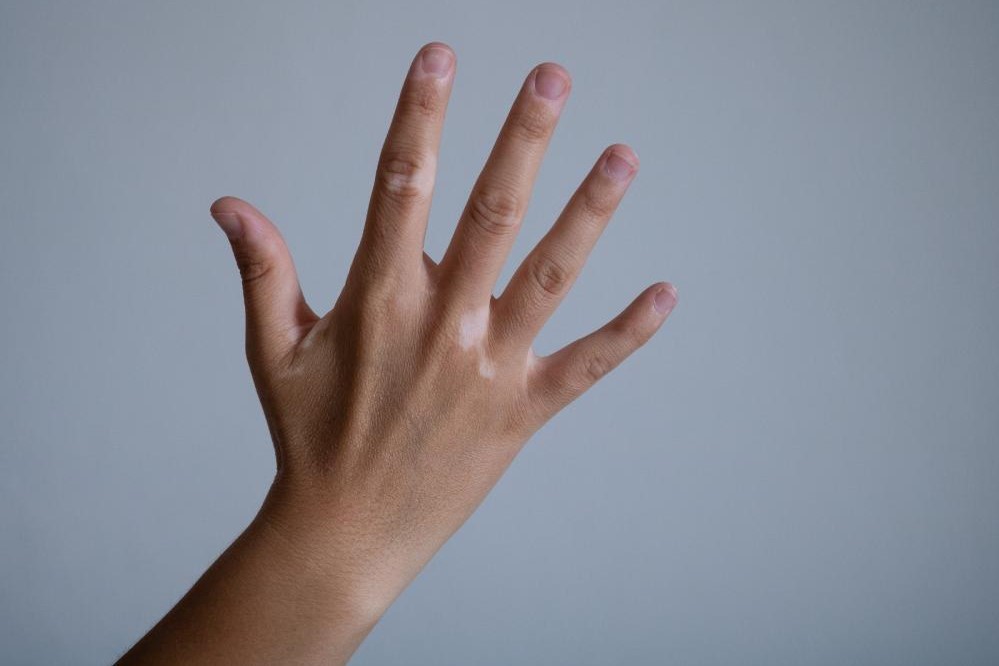
Vitiligo: effective treatments
Skin-whitening’ spots that enlarge little by little. Vitiligo is a disease that affects the epidermis. It is not contagious but can lead to a heavy psychological burden to live with due to the blemish
At present, there are no curative therapies, but there are several possibilities to improve the situation.
The disease affects melanocytes, the skin cells that produce melanin, the pigment responsible for colouring the skin, hence the unmistakable white spots on the epidermis (leucoderma).
The causes are unknown, but research is getting closer and closer to understanding the mechanisms behind the disease.
The areas affected by vitiligo
Worsening can be more or less rapid and sometimes the situation remains stable for years.
Although the entire epidermis can be affected, the onset of vitiligo usually affects specific areas, such as the area around the eyes, anus, glans and genitals.
The nails (especially the fingertips) may also be affected.
More generally, spots may also appear on the face, neck, hands, forearms and groin.
Where scars are present, new spots may also form.
Sometimes the skin attachments such as hair, beard, eyelashes and eyebrows, which are present in depigmented areas, may also whiten.
In some cases depigmentation also affects the lips and retina or iris, but without impacting vision.
Treating Vitiligo
There is no definitive cure for vitiligo.
However, the symptoms can be alleviated with various treatments.
There are dermocosmetic products that reduce the difference in colour between the spots and the rest of the epidermis.
A number of topical treatments are also successfully used.
Therapies include the use of immunosuppressants, tacrolimus or locally acting steroids, which, especially in the early stages of the disease, can help repigmentation by counteracting inflammation,’ the specialist emphasises.
To repigment the skin, it is also possible to undergo cycles of UVA-UVB, PUVA or narrow-band UVB phototherapy, combined with photosensitising substances such as psoralens (the results are, however, temporary).
It is rare for a single therapy to be effective, so the emphasis is on the combined use of drugs, supplements and sometimes phototherapy, depending on whether the disease is stationary, worsening or improving.
Melanocyte transplantation is, on the other hand, a developing option.
It is one of the latest innovations for vitiligo, and can only be used in selected cases, for small patches.
In these cases the treatment is a vitiligo cure.
The spread of vitiligo
Worldwide, vitiligo has an estimated prevalence of 1-2%, with an estimated 100 million patients. In some countries the incidence is higher, due to genetic and social reasons.
In 95% of cases, the disease appears before the age of 40, often between the ages of 10 and 30.
It strikes without a predilection among different ethnic groups.
The incidence is equal between the two sexes.
Read Also:
Emergency Live Even More…Live: Download The New Free App Of Your Newspaper For IOS And Android
Vitiligo, The Dermatologist: ‘Mitigated With Innovative Therapeutic Approaches’
SkinNeutrAll®: Checkmate For Skin-Damaging And Flammable Substances
Healing Wounds And Perfusion Oximeter, New Skin-Like Sensor Can Map Blood-Oxygen Levels
Psoriasis, An Ageless Skin Disease
Vitiligo, The Dermatologist: ‘Mitigated With Innovative Therapeutic Approaches’
Vitiligo: What Causes It And How To Treat It


